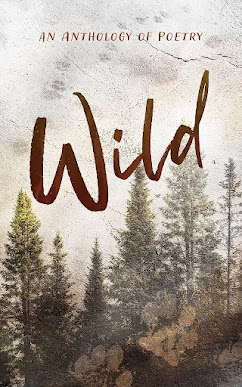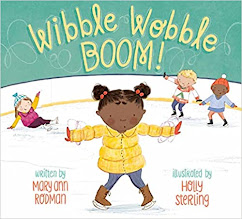I’ve been writing for children since 1977 and teaching writers since 1996!
My writing room’s shelves, desk and window sills boast enough books on writing-related topics to rival the stock of any Writer’s Bookshop.
Craft. Process. Story. The writer’s life. Writing for children. The ins and outs of publishing.
From Aristotle to Zinsser, with Lamott and McKee in the middle, each title stands ready to help me do my job.
 I’m happy to report, and with total confidence, there’s not one book on my shelves like Matt Bird’s THE SECRETS OF STORY (Writer’s Digest, 2016). It’s a must-have book on craft both smart and practical, Thumbs-up deserving - not only because of its eye-opening approach to storytelling, its thoughtfully-focused content, its sensible organization and the author’s personal writing style, but especially because the book delivers its subtitle’s promise - “Innovative Tools for Perfecting Your Fiction and Captivating Readers.”
I’m happy to report, and with total confidence, there’s not one book on my shelves like Matt Bird’s THE SECRETS OF STORY (Writer’s Digest, 2016). It’s a must-have book on craft both smart and practical, Thumbs-up deserving - not only because of its eye-opening approach to storytelling, its thoughtfully-focused content, its sensible organization and the author’s personal writing style, but especially because the book delivers its subtitle’s promise - “Innovative Tools for Perfecting Your Fiction and Captivating Readers.”
The Good News is: those innovative tools can be yours simply by entering our Book Giveaway. Be sure to read the details at the end of this post.
Matt Bird’s bona fides includes an MFA in Screenwriting from Columbia University, years of screenwriting and a long-running successful blog on storytelling, COCKEYED CARAVAN, recently renamed THE SECRET OF STORIES.
He offers the heart of this comprehensive book up front and early, on page 2, in fact: “Tell the story that would win you over, even if you didn’t want to hear it.”
And then in three Parts laden with common sense and cathartic Aha’s (Writing for Strangers, The Ultimate Story Checklist and Getting from Good to “Good Lord, This Is Amazing!”), he shares the means to the end - a good story told well.
Bird believes audience satisfaction is the name of the game. “You have to embrace your audience,” he writes. “They are the only reason to write anything.” Listening to our audiences is key, he tells writers; it’s what allows us to build identification between our hero and our audience. Fortunately, his Thirteen Essential Laws of Writing for Strangers show us how to listen.
By the time I reached Law #4 - AUDIENCES DON’T REALLY CARE ABOUT STORIES; THEY CARE ABOUT CHARACTERS, I’d put aside my yellow highlighter,
read to #13, then typed up all thirteen and emailed them to several of my writers and students.
 And so it went as I – eagerly! - read through Parts II and III, cornering pages, underlining previously-recognized Truths, bracketing paragraphs, starring key words, writing in the margins and the top and bottom of pages to restate in my words what Matt Bird presented. And all the while I kept thinking of my stories as well as my students’ and writers’ stories and how we now could perfect them, and thinking of how I’ll retool my SpringUniversity of Chicago Writer’s Studio Workshop - A Facilitated Children’s Novelists Writing Group, thanks to the book’s checklists.
And so it went as I – eagerly! - read through Parts II and III, cornering pages, underlining previously-recognized Truths, bracketing paragraphs, starring key words, writing in the margins and the top and bottom of pages to restate in my words what Matt Bird presented. And all the while I kept thinking of my stories as well as my students’ and writers’ stories and how we now could perfect them, and thinking of how I’ll retool my SpringUniversity of Chicago Writer’s Studio Workshop - A Facilitated Children’s Novelists Writing Group, thanks to the book’s checklists.
How’s this for one of Matt Bird’s head-bobbing, comforting Truths: “Writing is not one big talent. It is a discipline consisting of several distinct skills, each of which must be individually mastered by writing every day, day after day, for years, as you slowly get better.”
He then goes on to list the seven skills he believes writers need to master – Concept, Character, Structure and Plot, Scene Work, Dialogue, Tone and Theme. One by one, chapter by chapter, he breaks down each skill according to definition, common misconceptions and the relevant questions that need to be asked.
It’s those relevant questions we must ask and answer if our storytelling ever is to satisfy our audience, the questions that by book’s end become handy-dandy tools.
For example, in underscoring the importance of creating compelling characters, how do we get our audience to believe, care and invest? Matt Bird shares question after question we need to ask, making sure his illustrating examples drawn from familiar movies, tv shows and novels facilitate and serve our understanding.
He does the same for structure (The Challenge, the Easy Way, the Hard Way, the Climax) and Scene Work (The Set-up, Conflict and Outcome), sharing relevant questions, each brilliantly exampled.
In his Preface, Matt Bird reveals that he hopes his book is “useful, illuminating and most, of all, fun.” With this audience-member, he realized all three.
I can’t recall the last time I sat with a book on the craft of writing as fully engaged as I was reading THE SECRETS OF STORY and I think I know why.
In writing his book, Matt Bird thought about and embraced his audience of storytellers; he’d listened to their needs and worked hard to satisfy them. 😊
Writing in a lively, honest-to-the-bone style, he bravely put himself into the mix – his screenwriting studies, his unexpected illness, his life experiences, and best of all, his disappointments. Even though THE SECRETS OF STORY is a work of nonfiction, how could I not believe, care and invest?
“If you really value your audience,” he writes, again up front and early, “you’ll never have to choose between audience satisfaction and writing from the heart, because the two will be one and the same.”
For the record, I personally am ignoring Matt Bird’s Final Rule, which is to ignore everything he said in the book’s previous 330 pages. Way before that point, he’d written so convincingly, his Rules had segued and become the beliefs every storyteller needs.
To learn more about the author, click here to read his September 19, 2016 interview at the Blabbermouth blog.
IMHO: THE SECRETS OF STORY belongs on every writer’s bookshelf.
Happy storytelling! Happy checklisting!
Esther Hershenhorn
………………………………………………………………………………….
Now, to procure your copy of Matt Bird’s THE SECRETS OF STORY, enter our Book Giveaway and perhaps you’ll be the lucky winner. Use our Rafflecopter widget below. You may enter via 1, 2, or all 3 options.
If you choose option 2, you must leave a comment on today’s blog post below or on our TeachingAuthors Facebook page. If you haven’t already liked our Facebook page, please do so today! If you prefer, you may submit your comment via email to: Teachingauthors[at]gmail [dot] com
Email subscribers: if you received this post via email, you can click on the Rafflecopter link at the end of this message to access the entry form.
Note: if you submit your comments via email or Facebook, you must still enter the drawing via the widget below. The giveaway ends March 29, 2017, and is open to U.S. residents only.
[Carmela here: the above end date is a typo. The giveaway ends March 31, 2017.]
P.S. If you’ve never entered a Rafflecopter giveaway, here’s info on how to enter a Rafflecopter giveaway and the difference between signing in with Facebook vs. with an email address.













































